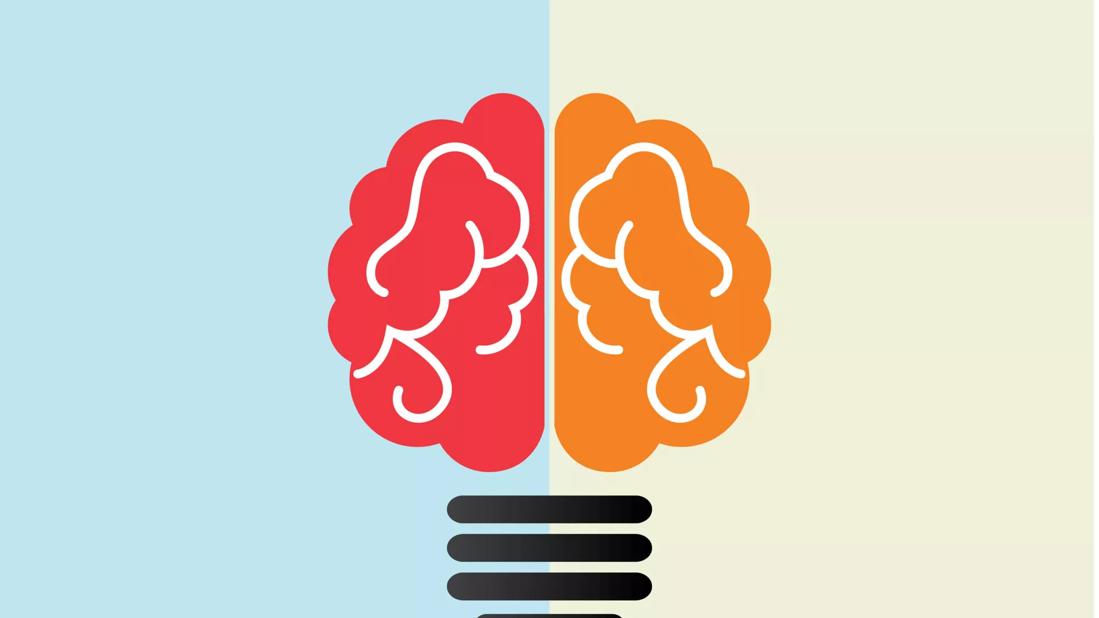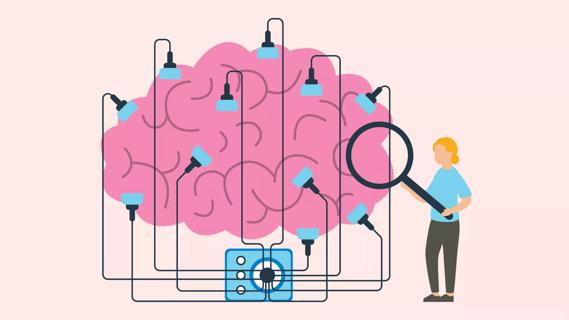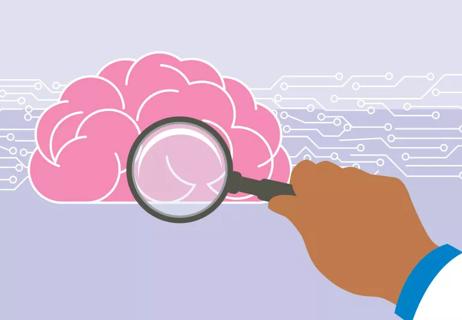Different parts are responsible for different things, but you use both sides all the time

We humans love labels. It’s our way of better understanding ourselves and each other. We put people into little boxes to explain who they are and what they’re like.
Advertisement
Cleveland Clinic is a non-profit academic medical center. Advertising on our site helps support our mission. We do not endorse non-Cleveland Clinic products or services. Policy
Zodiac signs. Personality tests. Right brain/left brain. All categories we use as shorthand to identify what makes us “a certain way.”
The artists among us get a reputation for being right-brained. The analytical types get called left-brained.
But why? Do we each really have a part of our brain that takes the driver’s seat, while the other part coasts by on fumes? Does that explain why some of us team with imagination and others are more comfortable with “just the facts”?
Not really, says health psychologist Grace Tworek, PsyD.
“Oftentimes, we think of right-brain thinkers being the more creative types — more artistic or free-spirited. Left-brain thinkers are considered more rigid, logical and detail-oriented,” Dr. Tworek explains. “But that’s not really accurate when we break down the science.”
Our brains are a complex and interconnected system that controls so much of who we are and what we do. And we all use both sides of our brains all day every day.
So, where does this left-brain vs. right-brain argument come from? And what’s the real story? Dr. Tworek explains.
It’s an understatement to say our brains are complicated. After all, they need to be. They have a lot of work to do.
Your brain interprets information from each of your senses (sight, smell, taste, sound and touch). Your brain allows you to think, feel, speak and move. It helps control your breathing, heart rate and other functions that happen so automatically, you barely ever think about them.
Advertisement
The list goes on and on.
But let’s keep it simple here.
Essentially, your brain can be divided into three parts, each with its own job to do.
Your cerebellum and your brainstem are the two parts of your brain that control your automatic functions — things like muscle movement, breathing, digestion and swallowing.
Your cerebrum is the third part, and it’s the part of your brain we’re talking about when we call someone left- or right-brained.
It’s the biggest part of your brain. And it’s responsible for interpreting information from your senses. Your cerebrum also regulates your emotions, reasoning and learning. In other words, it’s the part of your brain that starts and manages your active thoughts. It’s the part of the brain that makes you … you.
Your cerebrum is divided into two parts: the left hemisphere and the right hemisphere. (Hence, the whole idea of left and right brain.)
“It’s absolutely true that different parts of your brain are responsible for different things,” Dr. Tworek states. “But the idea that one hemisphere is substantially stronger than the other and that that dominance plays a major role in your personality or your abilities haven’t proven out in research.”
Much is still being learned about how the brain functions. But Dr. Tworek explains what we do know about our left and right brains.
The left hemisphere of your brain is typically the nexus of the more logical and bookish functions of your brain. Interestingly, the left hemisphere of your brain controls the right side of your body. And the right hemisphere controls your left side.
The left hemisphere is where most of us house our ability to do things like:
The right hemisphere is the more free-wheeling side of your brain. It’s the center of abilities like:
The left and right hemispheres in your brain don’t act independently. They’re connected by a bundle of fibers that relay information from one side to the other. That information highway is called the corpus callosum.
“The left and right hemispheres each do different things, but they work together,” Dr. Tworek says.
In other words, both hemispheres of your brain are firing constantly. And (unless you’ve had a stroke or other serious traumatic brain injury that severely affected one hemisphere) they likely function more or less at a similar rate.
That’s what researchers learned from brain scans of more than 1,000 individuals. They looked at 7,000 different regions of each participant’s brain. They found that, regardless of personality or individual preferences, all participants used both sides of their brains roughly equally.
Advertisement
In short, sure, some people are more creative, while others are more analytical. But it’s not because one half of their brain is stronger or used more than the other.
So, if your lack of musical skill or difficulty in math can’t be blamed on an under-firing side of your brain, what can you do to boost your skills?
The answer, Dr. Tworek says, is simple. Practice.
“Sometimes, it’s a matter of context — the narrative we tell ourselves going into a situation — that can actually bring out these different characteristics,” she notes.
That’s to say, our labels can hold us back. When we consider ourselves to be the “left-brain type,” we shy away from activities that require creativity or artistic interpretation. And, likewise, when we think of ourselves as an artsy right-brainer, we may not spend time reading or doing the Sunday crossword puzzle.
It’s a self-fulfilling prophecy: We convince ourselves we’re wired to be a certain way. So, we don’t seek out opportunities to engage in activities that we believe aren’t in line with our skills. And so we don’t develop new abilities because we don’t give them a shot.
Rather than using your “sidedness” as a crutch, honing new skills can tap into the talents of the other side of your brain.
Advertisement
“For example, if you’re more analytical, try enrolling in a class to learn something you haven’t done before. Maybe that’s something like painting or glassblowing,” Dr. Tworek suggests. “Classes are great because you’ll get instruction and some guidelines. That can be a really good way for an analytical personality to dip their feet into the other side of the brain, so to speak.”
On the flip side, if structure and order aren’t your strongest suits, it doesn’t mean you’re destined to be that way. People who thrive on creativity may be less organized or less likely to stick to timelines. But Dr. Tworek says you can boost your brainpower by practicing your organizational skills.
Put sticky notes on your computer screen to help keep track of your to-do list. Or set timers on your phone to remind you when it’s time to move on to the next task.
“Some people are naturally going to have certain abilities that are a little bit stronger than others. But our brains are muscles. They can be made stronger,” she says. “The more you practice and expose your brain to new things, the more likely you’ll pick up new skills along the way.”
So, go on, get out of your little box. Rip off that label. And give both sides of your brain the workout they need.
Advertisement
Learn more about our editorial process.
Advertisement

You can build mental muscle by challenging your mind and giving it new experiences

This first-of-its-kind study aims to identify biomarkers of neurological disorders

Even one drink can have an impact on your cognitive function leading to slurred speech, blurred vision and impaired memory

Lorem ipsum dolor sit amet. Et odio Quis vel ipsam omnis eum alias deleniti et placeat impedit non voluptas galisum hic autem enim et cupiditate aliquid. Est beatae quidem non facilis autem ut commodi nisi aut tempore rerum et dolores voluptatem cum enim optio id sapiente quasi. Ad laboriosam officiis 33 cupiditate sequi ea voluptatum consectetur qui necessitatibus voluptate et quasi doloremque et facere explicabo quo explicabo officia

Even one drink can have an impact on your cognitive function leading to slurred speech, blurred vision and impaired memory

Jujube is nutritionally dense, but research is limited

Mushroom coffee is expensive and has fewer health benefits than eating whole mushrooms

Is it a multiverse or collective misremembering?

Type 2 diabetes isn’t inevitable with these dietary changes

Applying a hot or cold compress can help with pain